
Join our community to see how developers are using Workik AI everyday.
Features

Generate Models Instantly
Quickly create models like CNNs, RNNs, and more with AI. Optimize layers and hyperparameters based on your task.

Automate Data Integration
AI automates data loading, batching, and preprocessing with TorchVision and DataLoader for fast augmentation and setup.

Effortless Training Setup
Quickly set up loops, optimizers, and loss functions, with seamless multi-GPU scaling using DataParallel.

Scale Across Multi-GPU & Multi-Node
Workik’s AI handles distributed training with DistributedDataParallel for large-scale model training.
How it works
Create your Workik account in seconds using Google or enter your details manually to unlock AI-powered PyTorch development tools.
Link your GitHub, GitLab, or Bitbucket repositories and import existing PyTorch models. Add libraries like TorchVision, TorchText, and DataLoader for precise AI-driven adjustments.
Leverage AI to train your imported or newly generated PyTorch models, optimize with Adam, and scale across multiple GPUs with DataParallel. AI helps debug, optimize, and suggest improvements throughout the training process.
Collaborate effortlessly by inviting your team to review, edit, and contribute to your PyTorch projects within the shared environment in Workik.
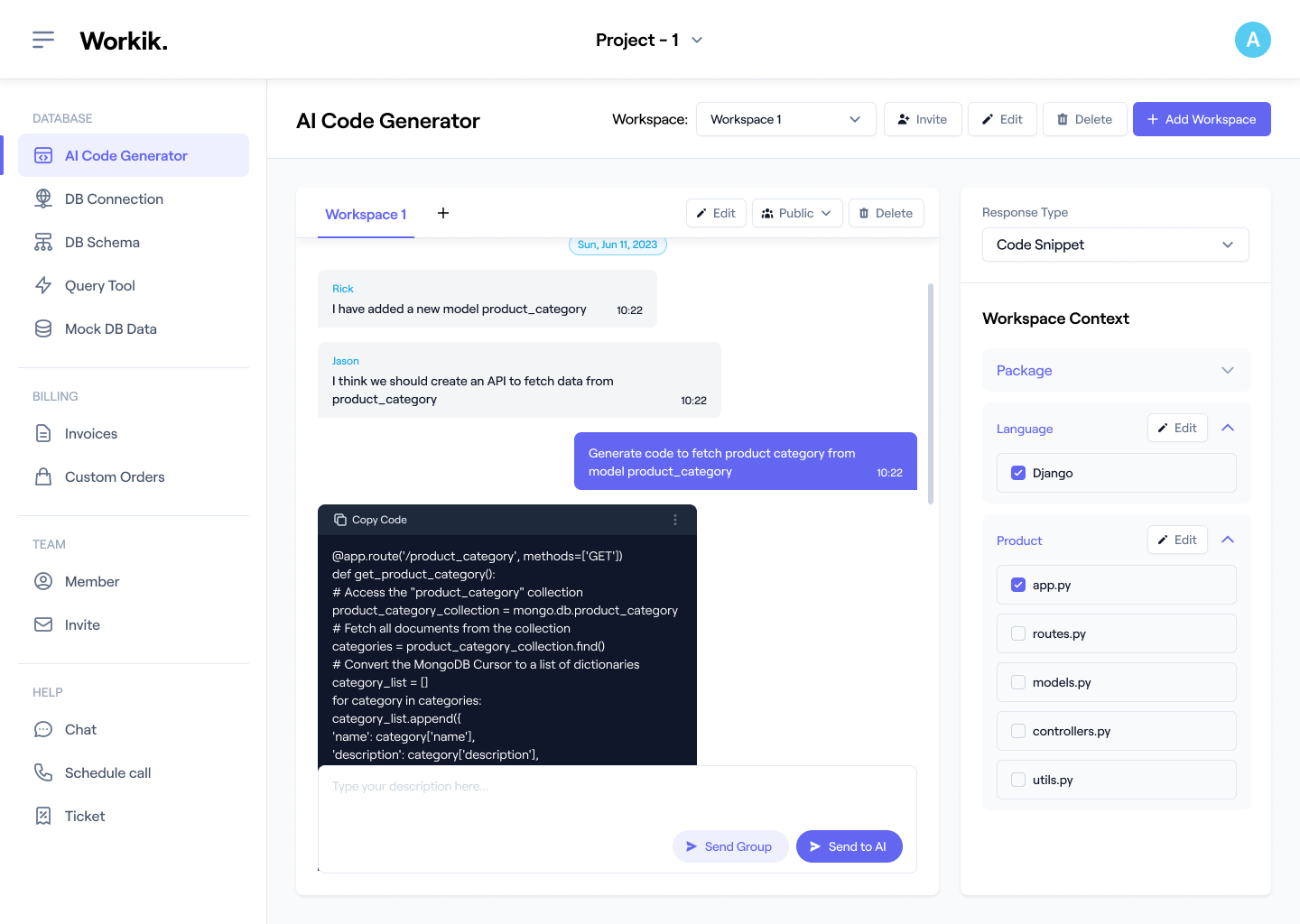

Expand
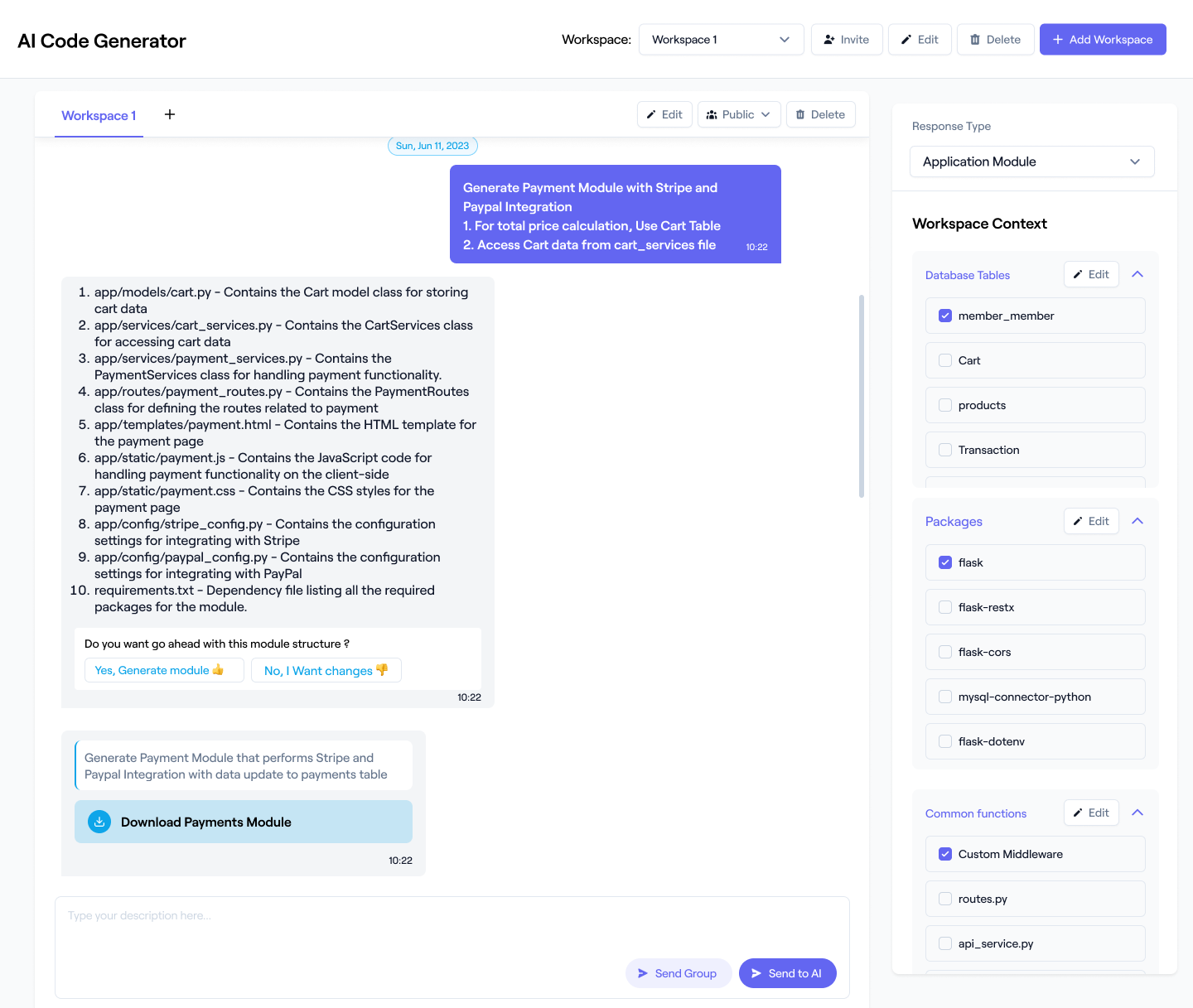

Expand
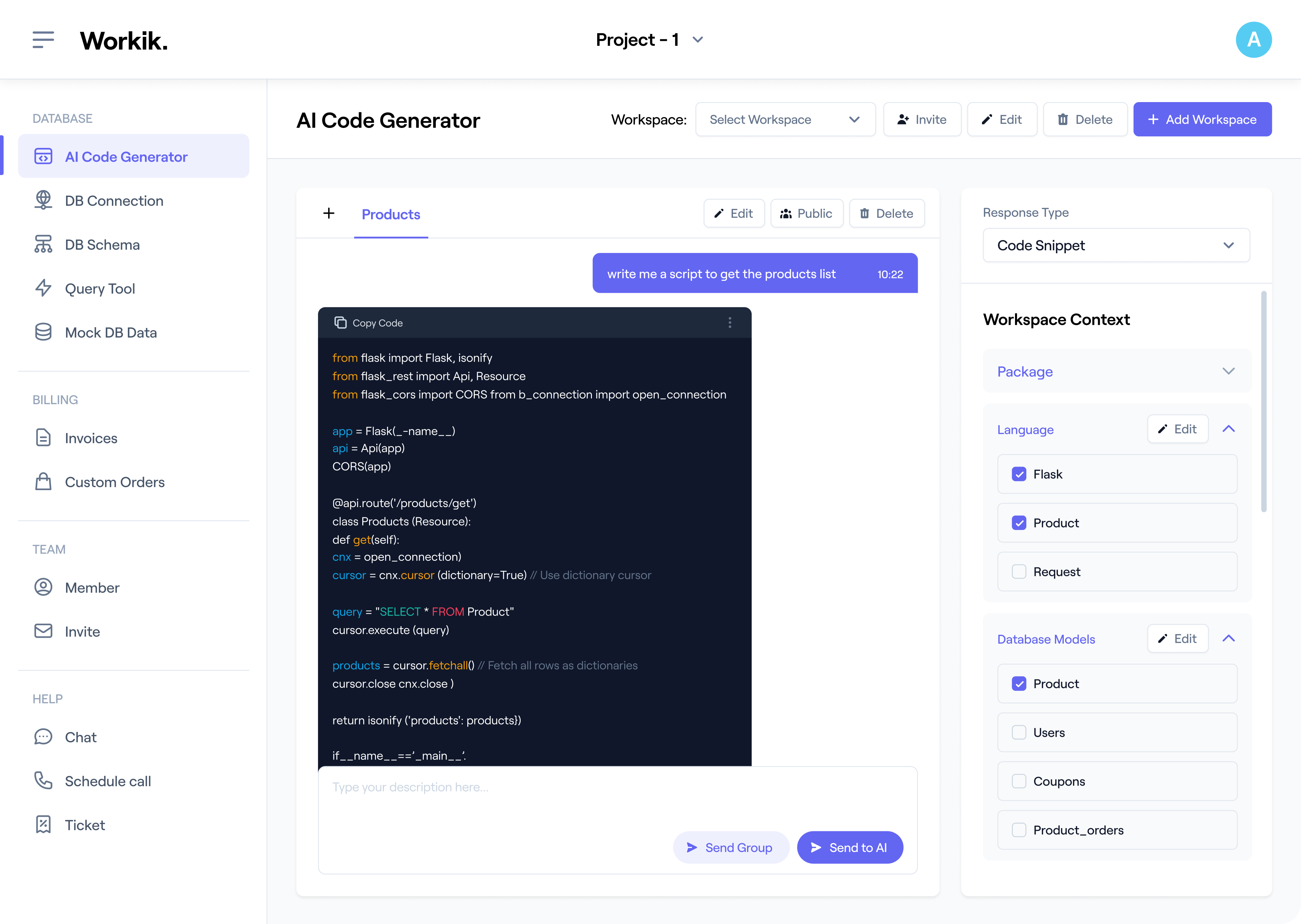

Expand
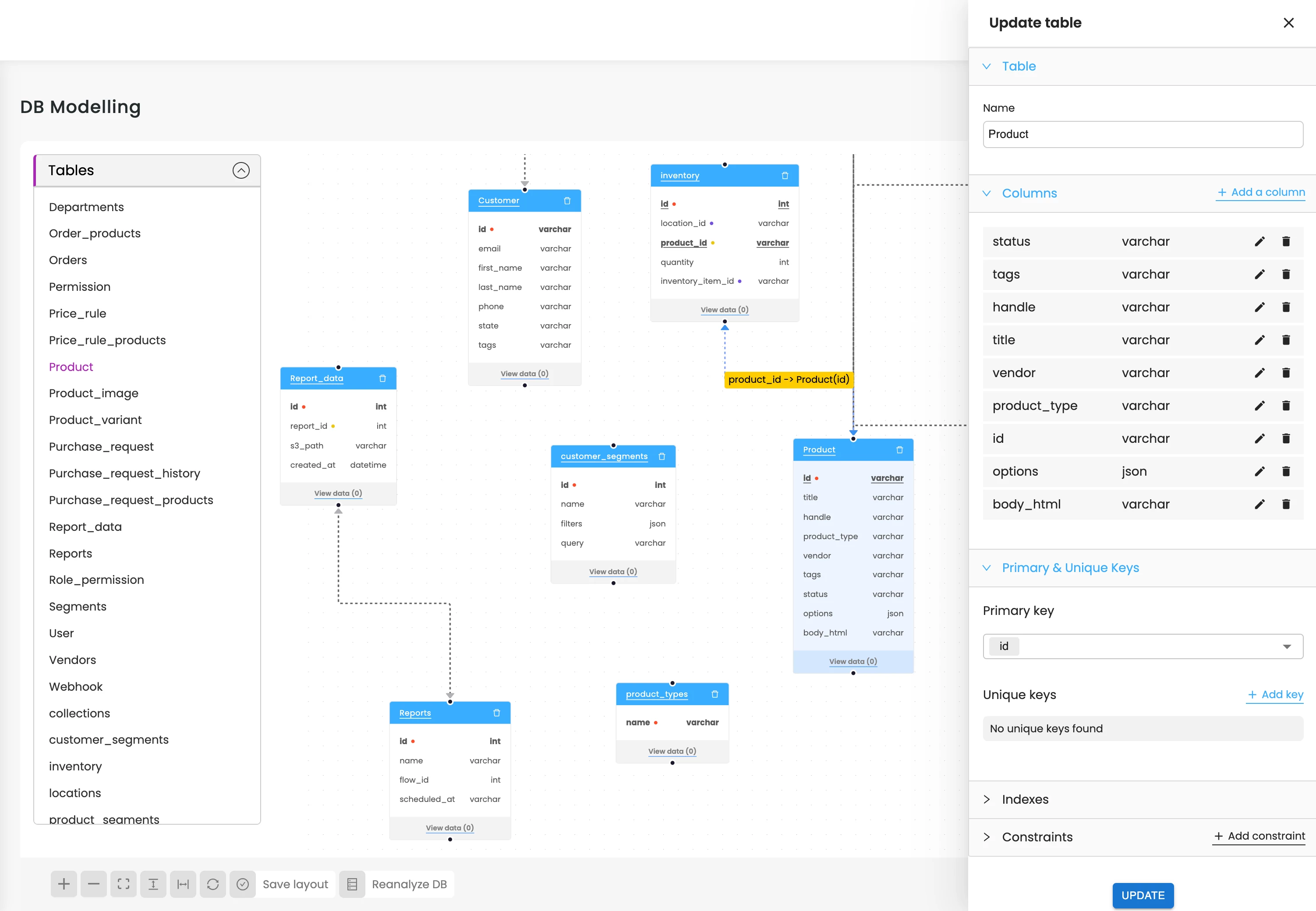

Expand
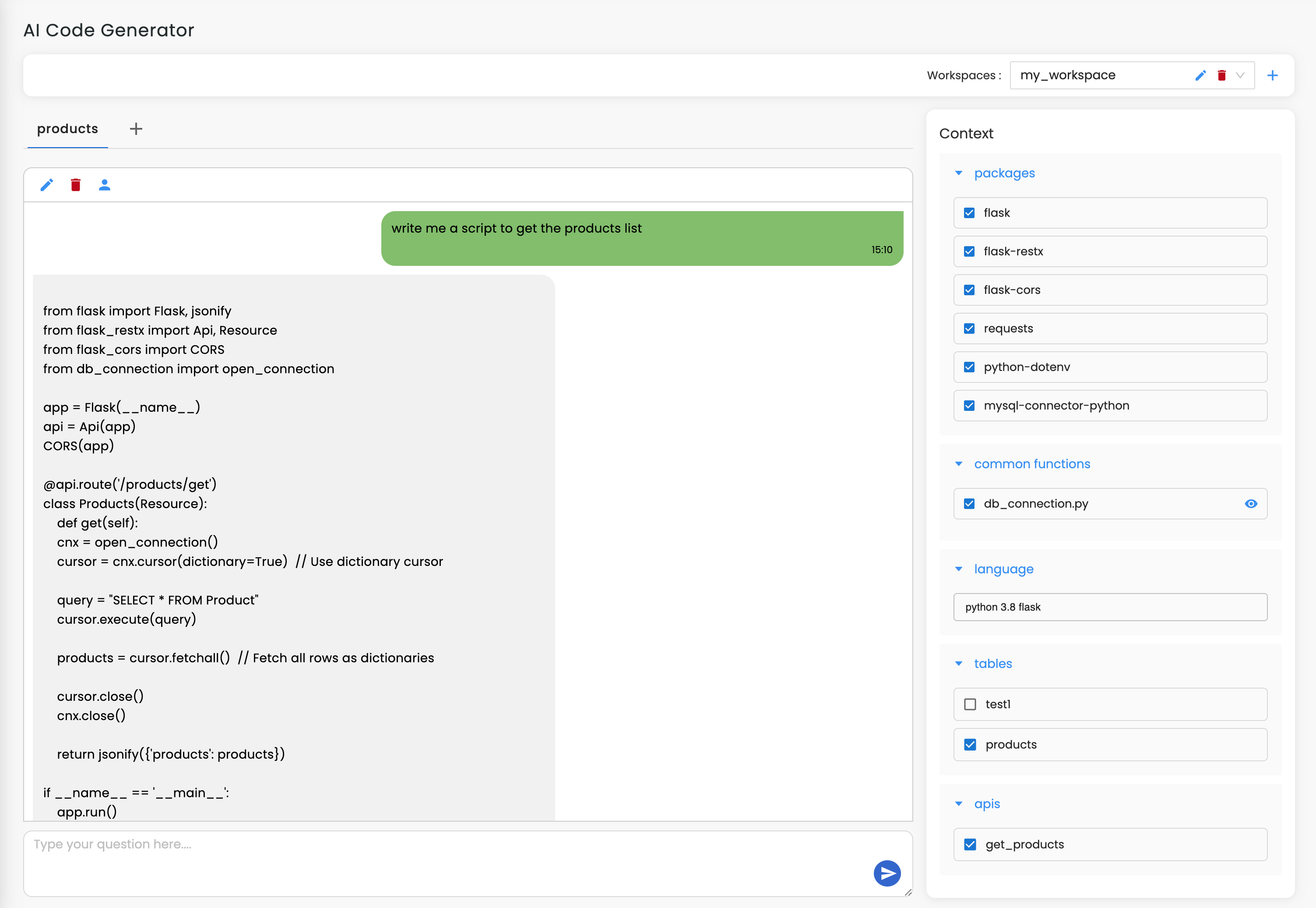

Expand


Expand


Expand


TESTIMONIALS
Real Stories, Real Results with Workik
Workik's AI made model debugging a breeze. PyTorch integration helped me scale multi-GPU training effortlessly!

Jean Baker
Senior ML Engineer
AI-generated PyTorch models for NLP tasks sped up my text classification projects significantly!

Nancy Wilson
Data Scientist
Workik’s AI boosted my PyTorch workflow, from data loading to model training!

Aiden Miles
Junior AI Engineer
What are some popular use cases of Workik's AI-powered PyTorch Code Generator?


Some popular use cases of Workik's AI-powered PyTorch Code Generator include but are not limited to:
* Generate custom layers and modules for building neural networks.
* Build CNNs, RNNs, and Transformers with AI-guided architecture and hyperparameter tuning.
* Automate data preprocessing with TorchVision for augmentation, normalization, and batching.
* Optimize training by adjusting learning rates, batch sizes, and regularization.
* Deploy models with TorchServe for scalable, real-time inference.
* Convert models to TorchScript for optimized mobile and edge deployment.
What context-setting options are available in Workik’s AI for PyTorch Code Generator?


Workik offers diverse context-setting options for PyTorch code assistance, allowing users to:
* Add libraries for tasks such as image processing, NLP, or structured model training.
* Specify model types like CNNs, RNNs, or Transformers for image, sequence, or text tasks.
* Use data batching, augmentation, and preprocessing tools to handle datasets efficiently.
* Sync with GitHub, GitLab, or Bitbucket to import and manage existing code.
* Deploy models using scalable production tools or convert them for edge-ready deployment.
How does AI assist in training PyTorch models with Workik?


Workik’s AI helps in setting up training loops, optimizers like Adam or SGD, and loss functions such as CrossEntropyLoss. It helps adjust learning rates, track model performance, and optimize for multi-GPU training with DataParallel.
Can Workik’s AI help with hyperparameter tuning in PyTorch?


Yes, Workik’s AI can automate hyperparameter tuning by adjusting parameters like learning rates, batch sizes, and layer configurations. This ensures optimal training performance for models like CNNs and RNNs.
Can AI assist with debugging PyTorch code?


Absolutely! Workik’s AI can identify errors in model training loops, data preprocessing, and tensor operations. It provides suggestions for fixing bugs and optimizing code, especially when dealing with complex architectures like Transformers or GANs.
Can Workik AI assist in converting PyTorch models for compatibility with other frameworks?


Yes, Workik AI can convert PyTorch models to ONNX (Open Neural Network Exchange) format, making the models compatible with other machine learning frameworks, such as TensorFlow. This enables seamless deployment across diverse environments that require cross-framework support.
How does Workik AI support experimentation with different PyTorch model architectures?


Workik AI allows developers to quickly generate and test various architectures, such as CNNs, RNNs, and Transformers, by automating layer configuration, hyperparameter tuning, and model validation. This enables rapid experimentation to find the most effective model for your specific task.
Generate Code For Free

PyTorch: Question and Answer
PyTorch is an open-source deep-learning framework for building and training neural networks. It offers a dynamic, flexible environment for developing AI models with autograd for automatic differentiation. PyTorch excels in tasks like computer vision, NLP, reinforcement learning, and more.
Popular frameworks and libraries used with PyTorch include:
Languages:
Python, C++
Data Handling:
DataLoader, TorchText (NLP), TorchVision (CV), TorchAudio (audio)
Model Building:
PyTorch Lightning, ONNX
Training:
Adam, SGD, DataParallel (multi-GPU)
Deployment:
TorchServe, TorchScript
Development Tools:
Jupyter, Google Colab, VS Code
Version Control:
GitHub, GitLab, Bitbucket
Common use cases for PyTorch include but are not limited to:
Computer Vision:
CNNs, object detection, segmentation using TorchVision
NLP:
Text classification, translation, and sentiment analysis with TorchText and Transformers
Reinforcement Learning:
AI agents for gaming, robotics
Audio Processing:
Speech recognition and audio classification with TorchAudio
Generative Models:
GANs for image generation, style transfer
Recommendation Systems:
Collaborative filtering for personalized recommendations
R&D:
Cutting-edge AI research and development
Career roles in PyTorch include Machine Learning Engineer, Data Scientist, AI Research Scientist, Deep Learning Engineer, and Model Deployment Engineer, focusing on building, training, and deploying models, and optimizing neural networks with PyTorch.
Workik AI enhances PyTorch development by:
Code Generation:
Instantly create PyTorch models, training loops, and optimization code.
Model Architecture Setup:
Automate the setup of CNNs, RNNs, and Transformer-based models.
Debugging:
AI-driven insights for fixing errors in training loops, optimizers, and tensor operations.
Optimization:
Suggests improvements in hyperparameters, learning rates, and GPU utilization for faster training.
Refactoring:
AI recommends code improvements for cleaner, more maintainable PyTorch scripts.
Deployment:
Generate PyTorch models with TorchServe and convert them to TorchScript for optimized inference.
Documentation:
Generate documentation for model architectures and training pipelines.
Explore more on Workik
Get in touch
Don't miss any updates of our product.
© Workik Inc. 2025 All rights reserved.

